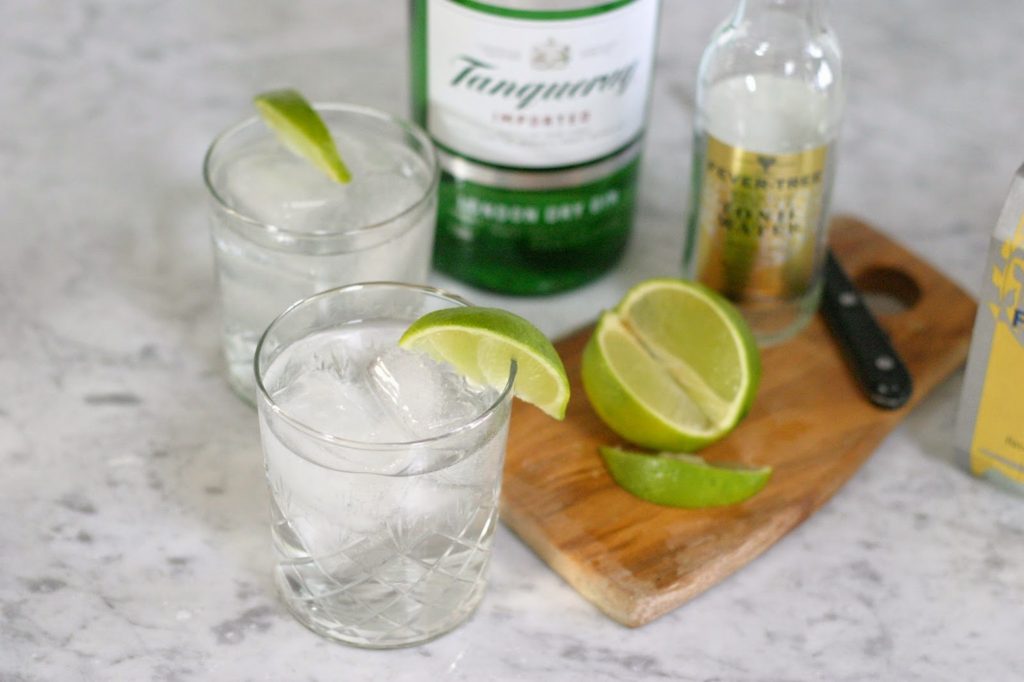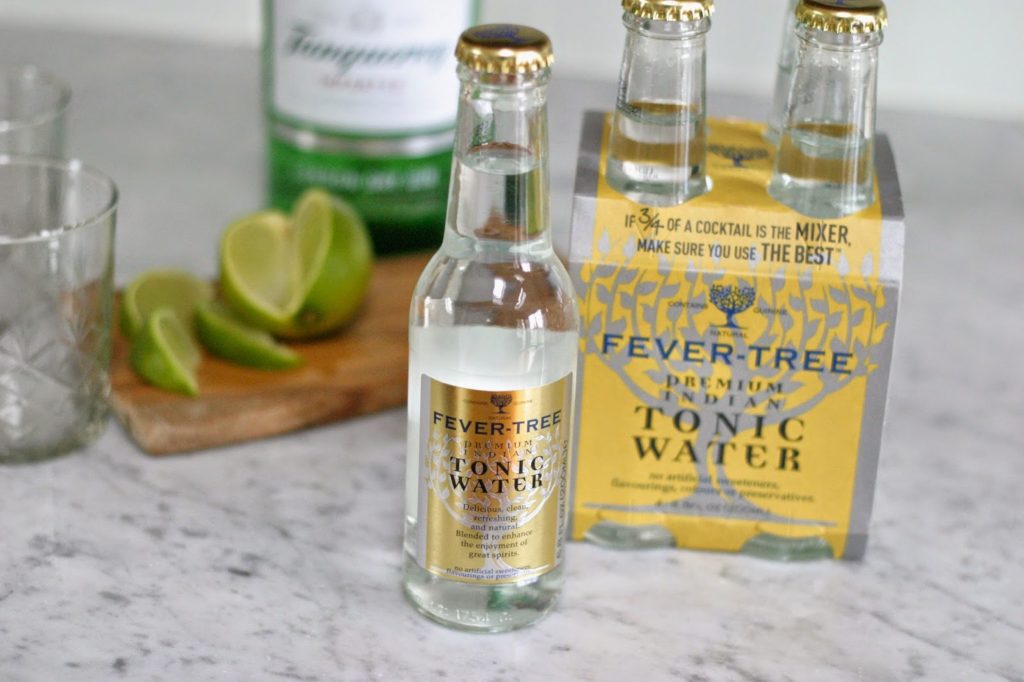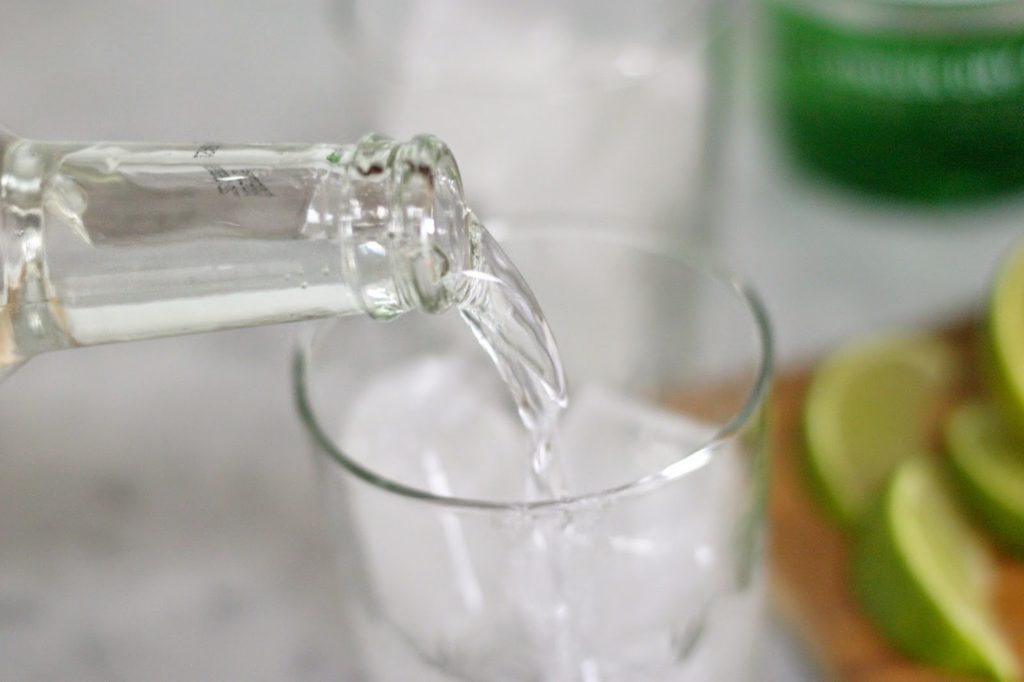Writing so much about gin yesterday had me craving a Gin & Tonic. It’s a delightfully simple cocktail (the entire recipe is in the name, after all), but it’s classic and refreshing, and certainly deserves a place in your repertoire.
With a cocktail this simple, the ingredients you use take on more importance. As I mentioned in yesterday’s post, every gin is going to be flavored with different botanicals and so will give your Gin & Tonic a slightly different taste. Different brands of tonic water also have slightly different tastes and may pair better with certain gins. I’ve never splurged beyond the usual Schweppes or Canada Dry before, but for this post I went out and bought a pack of Fever Tree, which G&T aficionados swear by. I don’t know if it’s just the trendy packaging and tiny bottles, but I think it really elevates the drink to something special. It’s got a milder but more complex flavor. It’s not that I’ll never buy a bottle of Schweppes again, but Fever Tree is a worthy splurge. As for gin, I usually reach for Tanqueray, but I’m looking forward to trying out some others.
Huffington Post did a fun taste-test of a number of different combinations of gin and tonic brands. Their favorite was Gordon’s with Fever Tree. For more expensive gin, they preferred Canada Dry tonic, which didn’t overwhelm the gin’s flavor. What I like most about this analysis is that it really shows how the flavors in both the gin and tonic can really change the cocktail. Even the garnish can do a great deal. I’ve always reached for lime, but when I broke into the second bottle of tonic I used lemon instead and liked it a lot better. Less conventional options include cucumbers, herbs, and even olives or tomatoes. Some gin lovers say to compliment the botanicals used in the gin, while others say to try and contrast them. I say try it all and figure out what you like.
History: I love a good cocktail story, and the Gin & Tonic has a fantastic one. It begins with the Quechua people of Peru. They used the bark of the cinchona tree, which they called quina-quina, as a muscle relaxant that stopped shivering. They would mix it with sweetened water to make its bitter taste more palatable. A Jesuit priest named Agostino Salumbrino sent some of the bark to Rome, suggesting that it might be used to ease the shakes of feverish malaria patients. In a remarkable coincidence, the bark did not just stop the shivering of malaria patients; it actually cured them, through an entirely different mechanism. Two French scientists eventually isolated the medicinal compound in the bark, naming it quinine after the Quechua word for the tree.
As the British expanded into India in the 19th century, quinine became used as a malaria prophylaxis, meaning it was taken before exposure to the disease to prevent infection. Even on its own, the quinine was still bitter, so British soldiers mixed it with sugar, soda water, lime, and their gin ration. So the Gin & Tonic was born. By 1858, tonic water was being produced commercially and marketed to the growing number of Brits in India and other tropical countries. It was apparently something of an acquired taste, as it became a popular cocktail. Once it was not being consumed for medicinal purposes, the amount of quinine in tonic water was reduced to its current levels for a taste that is much less bitter (so, on your next tropical vacation, please don’t consider a daily G&T a viable alternative to your usual dose of malarone).
Gin & Tonic
1.5 oz. gin
3.5 oz. tonic (or to taste)
Pour gin into a rocks glass. Fill glass with ice. Top with tonic water. Garnish with a lime or lemon twist. Avoid malaria.








